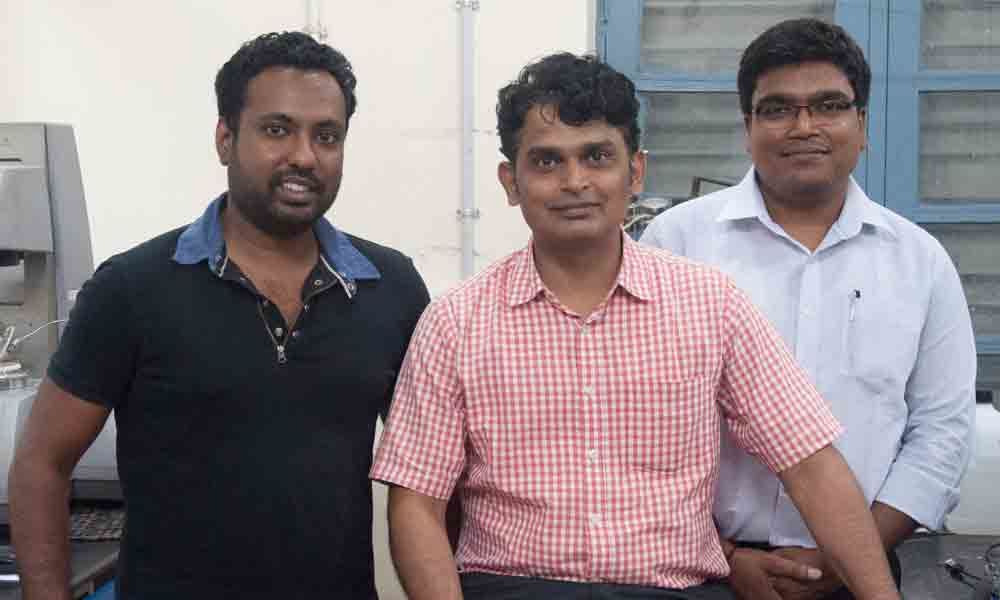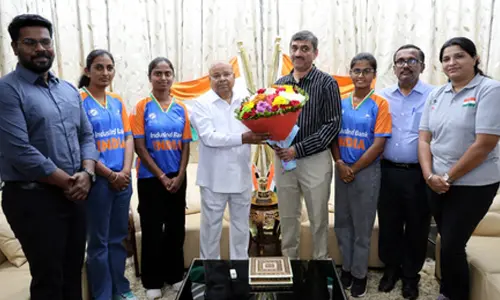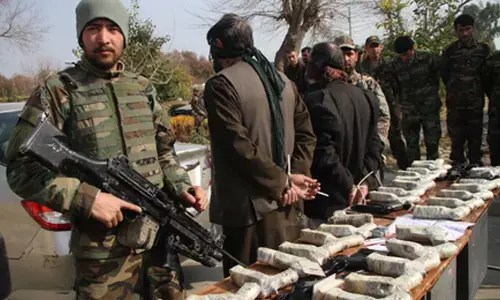IIT-Madras develops new methods to extract methane
 Prof Jitendra Sangwai (C), Mr Vishnu C. (L) & Mr Pawan Gupta (R), Research Scholars, IIT-M
Prof Jitendra Sangwai (C), Mr Vishnu C. (L) & Mr Pawan Gupta (R), Research Scholars, IIT-M1,900 trillion cubic meters of methane gas lie untapped within Indian Exclusive Economic Zone waters.
This is 1,500 times more than country's present gas reserves.
Chennai: Indian Institute of Technology Madras researchers are developing new techniques for extracting methane from natural gas hydrates. Promising results from their research have been published in leading international journals such as Energy and Fuels and Applied Energy recently.
There has been worldwide interest in the development of techniques to extract methane gas trapped in ice-like crystalline cages called 'Gas hydrates,' which are present in shallow sediments along continental coastlines. Hydrates are particularly promising methane sources in India because nearly 1,900 trillion cubic meters of methane gas lie untapped in these cages within the waters of the Indian Exclusive Economic Zone. This is 1,500 times more than country's present gas reserve.
The Ministry of Earth Sciences, Govt of India, reports that Krishna-Godavari basin and Andaman Basin have large amounts of gas hydrates. This IIT Madras research towards developing techniques to extract methane from gas hydrates can enable indigenous supply of natural gas and potentially lighten the nation's natural gas import burden.
The research is being headed by Dr. Jitendra Sangwai, Professor (Petroleum Engineering), Department of Ocean Engineering, IIT Madras, who studies state-of-art processes used to recover crude oil from offshore reservoirs in India, and includes Research Scholars Pawan Gupta and Vishnu C. His research is being funded by IIT Madras and Department of Science and Technology (DST), Govt. of India. Speaking about the importance of this research, Dr. Jitendra Sangwai said, "Research is underway around the world to develop methods to extract methane from gas hydrates from both clayey and sand-dominated reservoirs. The Krishna-Godhavari basin is a clayey reservoir while the off-shore Indian peninsular ones are a mix of both clayey and sandy. As gas hydrates are comparatively immobile and impermeable, they need to be dissociated into their constituent gas and water before the methane recovery from hydrate reservoirs is possible."
Four techniques are being studied in various laboratories for this dissociation, namely - thermal stimulation, depressurisation, chemical injection and carbon dioxide injection. Dr. Sangwai's team analyses the combined effects thermal stimulation and depressurisation in one branch of study, and polymer injection in another.
In their study on thermal stimulation and depressurization, the IIT Madras research team reported that the combination of the two processes is more efficient for methane production from clayey hydrate reservoir than either, individually. This has been attributed to the relatively faster increase in volume available for the gas to expand upon application of heat, which results in faster decrease in pressure of the hydrate reservoir.














